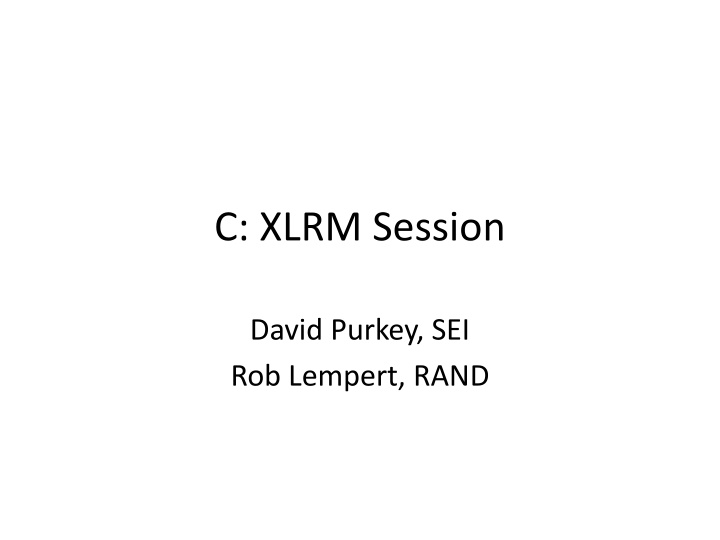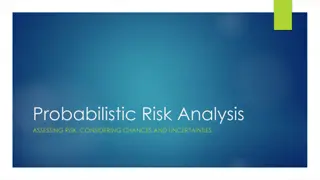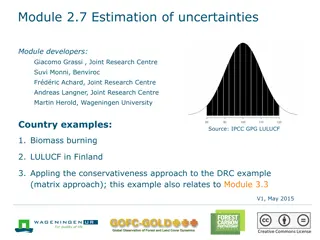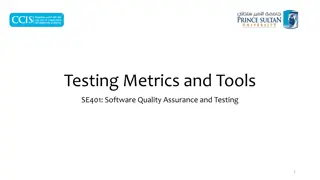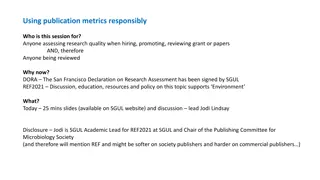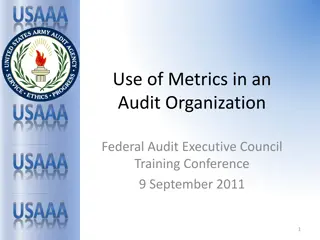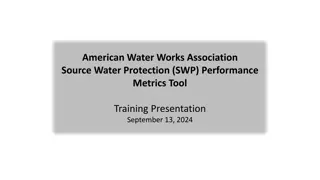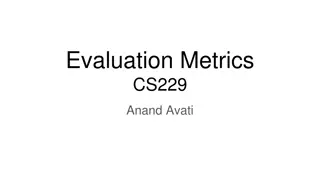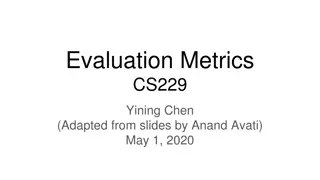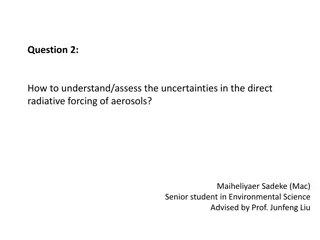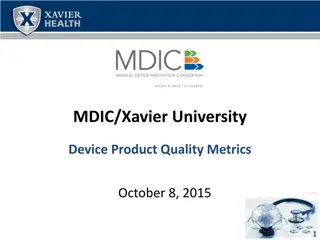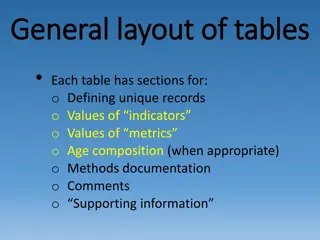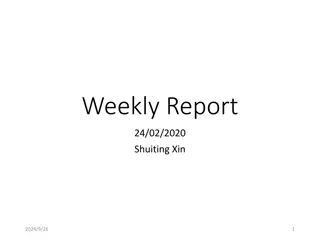Water Management Uncertainties and Performance Metrics Analysis
This content discusses the uncertainties in water management, including factors affecting outcomes, plausible ranges of uncertainties, and necessary information. It also covers the importance of performance metrics, measures, and indicators for evaluating system characteristics, along with acceptable levels and limits. The role of response packages and policy levers in addressing uncertainties and enhancing system performance is also explored.
Download Presentation

Please find below an Image/Link to download the presentation.
The content on the website is provided AS IS for your information and personal use only. It may not be sold, licensed, or shared on other websites without obtaining consent from the author.If you encounter any issues during the download, it is possible that the publisher has removed the file from their server.
You are allowed to download the files provided on this website for personal or commercial use, subject to the condition that they are used lawfully. All files are the property of their respective owners.
The content on the website is provided AS IS for your information and personal use only. It may not be sold, licensed, or shared on other websites without obtaining consent from the author.
E N D
Presentation Transcript
C: XLRM Session David Purkey, SEI Rob Lempert, RAND
Robustness Analysis Uncertainties: Changes in Climate Changes in Population Changes in Landuse Response Strategies: Add infrastructure (e.g. desalination) Improvements in system efficiency Wastewater reuse Demand Management OSeMOSYS Outcome Metrics: Delivery reliability Unmet demands Hydropower generation Groundwater & surface water storage 2
Recall also that the XLRM Framework support participatory scoping and analytical design Uncertainty Factors (X) Response Packages/Policy Levers (L) Uncertain factors outside of the control of water managers which form the basis of scenarios analysis. Management strategies available to water managers: -Current system -Planned strategies Models (R) Models to produce metrics of performance (M) for each strategy (L) in the face of ensembles of uncertainties (X) Performance Metrics (M) Results of interest, metrics used to evaluate the performance of strategies under consideration 3
Uncertainties (X) Factors of Uncertainty(X) Response Packages (L) - What uncertain factors, outside the control of water managers, may affect water management outcomes? - What is the plausible range for such uncertainties? - What information is needed to define these ranges and any best estimates? - Who has the information? Models (R) Performance Metrics (M)
Performance Metrics (M) Factors of Uncertainty (X) Response Packages (L) Models (R) Performance Metrics (M) - What characteristic of system performance are important to you? - What are the measures and indicators that we should use to evaluate these characteristics? - What are the acceptable levels and limits of this measures and indicators to be achieved? - What is the information needed to define these acceptable levels and limits? - Who has the information?
Response Packages (L) Factor s of Uncertainty (X) Response Packages/Policy Levers (L) - Are there additional projects that we should include in the base line? - What types of response packages in addition my potentially address the impacts of climate change? Models (R) Performance Metrics (M)
Relationships (R) Factors of Uncertainty (X) Response Packages (L) Models (R) Performance Metrics (M) - Based on what you heard yesterday about our tools and approaches, what advice would you have for improving the modeling that will be use to support the analysis?
Uncertainty Factors (X) Response Packages/Policy Levers (L) Future climate (plus flood, droughts) Future cropping patterns Population and economic growth, and their effect on water demand Ability to implement end use efficiency programs Funding availability Operational deviations from assurance rules Natural hazards (earthquakes) Political instability (allocations, demand, international trade) Cost variability (energy and water) Infrastructure ground conditions delay implementation, as does corruption Hydropower plant efficiency (sedimentation) Historical uncertainty New resource discovery (gas), and policies (nuclear) Market reforms (energy, water) Non-technical losses (theft) Organizational capacity Allocation compliance during stress Infrastructure investments - Storage, transfer, hydro, irrigation - LH III and IV (timing) - Re-regulating dam - Fish river dam Water governance - Inter-basin integrated planning and cooperation - Organizational stability - Allocation priority between sectors Water management - Enhance end use efficiency - Change cropping patterns - Develop more ground water - Encourage growth in water rich areas - Distribution loss reduction - Planned assurance rules - Catchment management - Monitoring, higher res info - Water reuse, return flow capture - Service expansion to rural communities 8 - Energy
